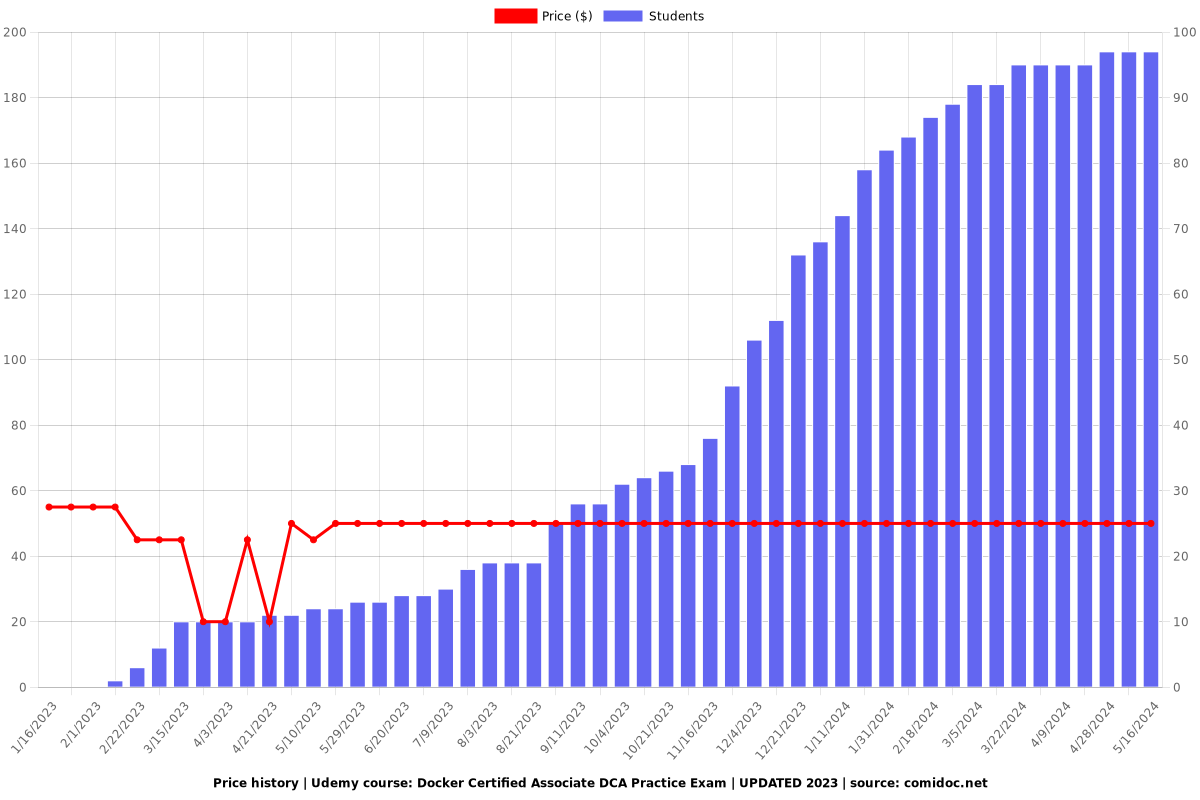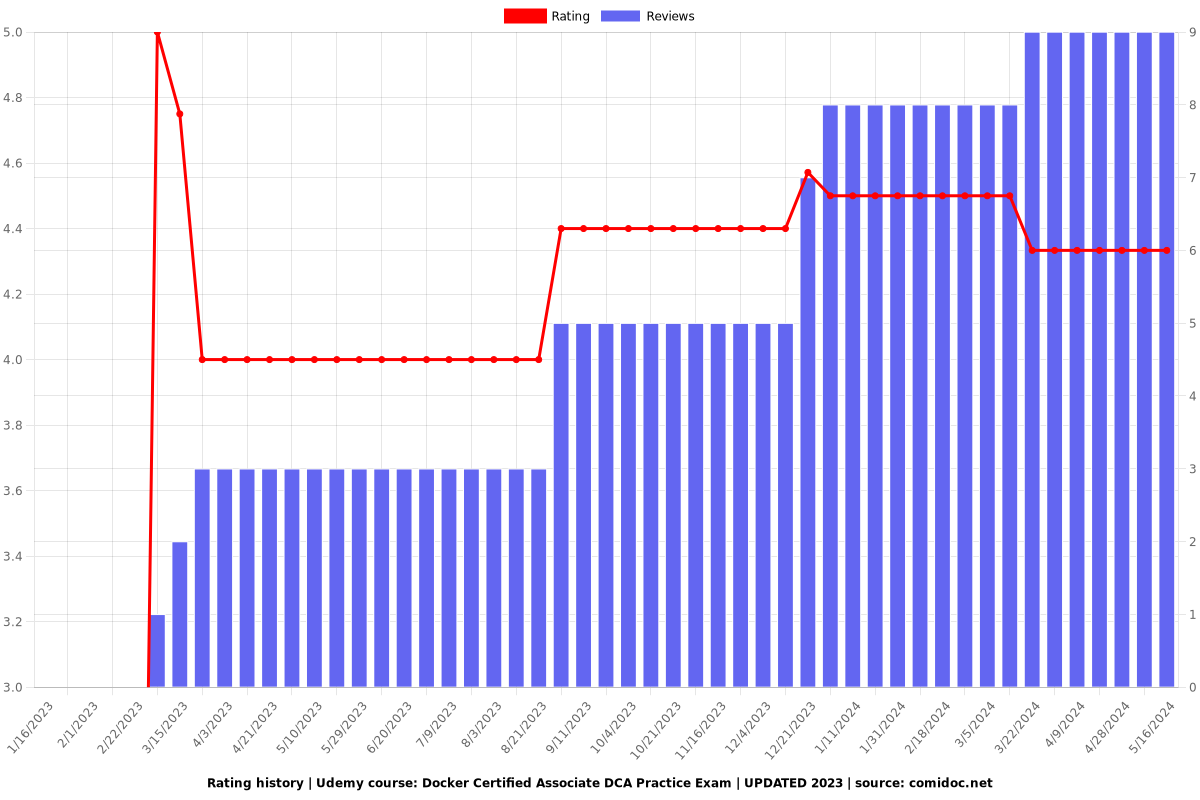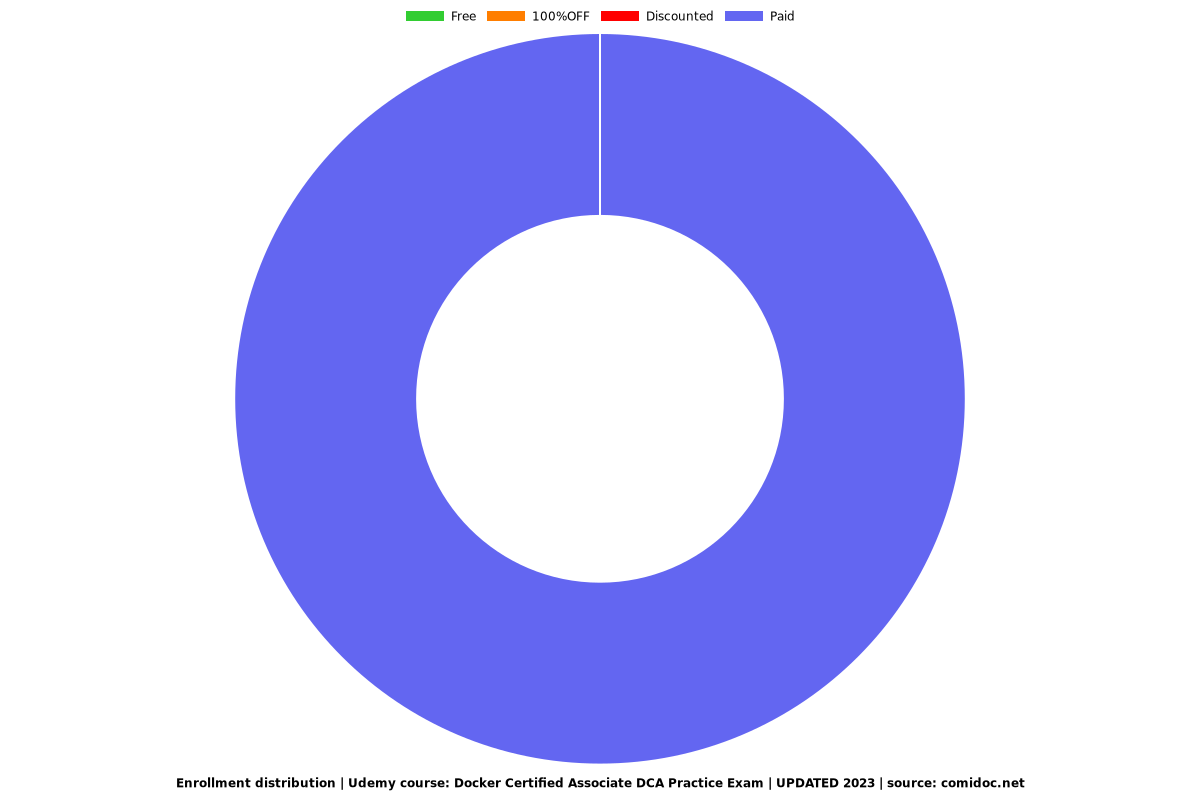Docker Certified Associate DCA Practice Exam | UPDATED 2023
Test Your Knowledge in 6 Complete Practice Exam and become a Docker Certified Associate (DCA). +100 Explained Questions!

What you will learn
Identify areas that require more study and focus on them to improve their understanding of Docker.
Gain confidence in taking the actual DCA Exam through multiple practice tests
Test and evaluate their knowledge of Docker through +180 well-explained and commented questions.
Receive support and guidance for any questions or related subjects during the course.
Pass the Docker Certified Associate Practice Exam (DCA) Certification and achieve the goal of becoming a Docker Certified Associate.
Why take this course?
Docker Certified Associate Practice Exam (DCA) Certification with DOMC (Discrete Option Multiple Choice)
Practice your knowledge with this package with 6 complete practice test for THE NEW Docker Certified Associate (DCA) Exam
You'll learn about all basic to advance level and help you to pass you Docker certified Associate Examination Docker Certified Associate Practice Exam (DCA) Certification and Docker Complete Training
You to achieve your target and aim to practices online with help the multiply question and option which help the learn score great and it is nice Associate Practice Exam (DCA) Certification to score great numbers with the DCA examination.
The best way to today modern practices can make you perfect to qualify the test online most the professional software engineers participates such test online before applying for the target examination and then achieve their goal you are one of them to go to achieve your goal soon in Docker Certified Associate Practice Exam (DCA) Certification
There are +100 questions in all, all very well commented and explained, so you can learn while testing your knowledge. Now the exam format is completely different than before. You will have questions in the DOMC (Discrete Option Multiple Choice) format. 13 multiple choice and 42 discrete option multiple choice (DOMC)
This practice test tries to stay as close to the DCA certification's syllabus as possible with the weight of topics for questions roughly distributed as follows:
Orchestration - 25%
Content may include the following:
Complete the setup of a swarm mode cluster, with managers and worker nodes
Describe and demonstrate how to extend the instructions to run individual containers into running services under swarm.
Describe the importance of quorum in a swarm cluster.
Describe the difference between running a container and running a service.
Interpret the output of “docker inspect” commands.
Convert an application deployment into a stack file using a YAML compose file with "docker stack deploy"
Manipulate a running stack of services.
Describe and demonstrate orchestration activities.
Increase the number of replicas.
Add networks, publish ports.
Mount volumes.
Describe and demonstrate how to run replicated and global services.
Apply node labels to demonstrate placement of tasks.
Describe and demonstrate how to use templates with “docker service create”.
Identify the steps needed to troubleshoot a service not deploying.
Describe how a Dockerized application communicates with legacy systems.
Describe how to deploy containerized workloads as Kubernetes pods and deployments.
Describe how to provide configuration to Kubernetes pods using configMaps and secrets.
Image Creation, Management, and Registry - 20%
Content may include the following:
Describe the use of Dockerfile.
Describe options, such as add, copy, volumes, expose, entry point.
Identify and display the main parts of a Dockerfile.
Describe and demonstrate how to create an efficient image via a Dockerfile.
Describe and demonstrate how to use CLI commands to manage images, such as list, delete, prune, rmi.
Describe and demonstrate how to inspect images and report specific attributes using filter and format
Describe and demonstrate how to tag an image.
Describe and demonstrate how to apply a file to create a Docker image.
Describe and demonstrate how to display layers of a Docker image
Describe and demonstrate how to modify an image to a single layer.
Describe and demonstrate registry functions.
Deploy a registry.
Log into a registry.
Utilize search in a registry.
Push an image to a registry.
Sign an image in a registry.
Pull and delete images from a registry
Installation and Configuration - 15%
Content may include the following:
Describe sizing requirements for installation.
Describe and demonstrate the setup of repo, selection of a storage driver, and installation of the Docker engine on multiple platforms.
Describe and demonstrate configuration of logging drivers (splunk, journald, etc.).
Describe and demonstrate how to set up swarm, configure managers, add nodes, and setup the backup schedule.
Describe and demonstrate how to create and manage user and teams.
Describe and demonstrate how to configure the Docker daemon to start on boot.
Describe and demonstrate how to use certificate-based client-server authentication to ensure a Docker daemon has the rights to access images on a registry.
Describe the use of namespaces, cgroups, and certificate configuration.
Describe and interpret errors to troubleshoot installation issues without assistance.
Describe and demonstrate the steps to deploy the Docker engine, UCP, and DTR on AWS and on-premises in an HA configuration.
Describe and demonstrate how to configure backups for UCP and DTR
Networking - 15%
Content may include the following:
Describe the Container Network Model and how it interfaces with the Docker engine and network and IPAM drivers.
Describe the different types and use cases for the built-in network drivers.
Describe the types of traffic that flow between the Docker engine, registry and UCP controllers.
Describe and demonstrate how to create a Docker bridge network for developers to use for their containers.
Describe and demonstrate how to publish a port so that an application is accessible externally.
Identify which IP and port a container is externally accessible on.
Compare and contrast “host” and “ingress” publishing modes.
Describe and demonstrate how to configure Docker to use external DNS.
Describe and demonstrate how to use Docker to load balance HTTP/HTTPs traffic to an application (Configure L7 load balancing with Docker EE).
Understand and describe the types of traffic that flow between the Docker engine, registry, and UCP controllers
Describe and demonstrate how to deploy a service on a Docker overlay network.
Describe and demonstrate how to troubleshoot container and engine logs to resolve connectivity issues between containers.
Describe how to route traffic to Kubernetes pods using ClusterIP and NodePort services.
Describe the Kubertnetes’ container network model.
Security - 15%
Content may include the following:
Describe security administration and tasks.
Describe the process of signing an image. ● Describe default engine security.
Describe swarm default security.
Describe MTLS.
Describe identity roles.
Compare and contrast UCP workers and managers.
Describe the process to use external certificates with UCP and DTR.
Describe and demonstrate that an image passes a security scan.
Describe and demonstrate how to enable Docker Content Trust.
Describe and demonstrate how to configure RBAC with UCP.
Describe and demonstrate how to integrate UCP with LDAP/AD.
Describe and demonstrate how to create UCP client bundles.
Storage and Volumes - 10%
Content may include the following:
Identify the correct graph drivers to uses with various operating systems.
Describe and demonstrate how to configure devicemapper.
Compare and contrast object and block storage and when they should be used.
Describe how an application is composed of layers and where these layers reside on the filesystem.
Describe the use of volumes are used with Docker for persistent storage.
Identify the steps to take to clean up unused images on a filesystem and DTR.
Describe and demonstrate how storage can be used across cluster nodes.
Describe how to provision persistent storage to a Kubernetes pod using persistentVolumes.
Describe the relationship between container storage interface drivers, storageClass, persistentVolumeClaim and volume objects in Kubernetes.
The tests will help you gain confidence to take the exam, test your knowledge and show you which topics should be studied the most.
In addition, you will have all my support for the questions and related subjects.
Charts
Price

Rating

Enrollment distribution
